The Evolution of Sudanese Arabic
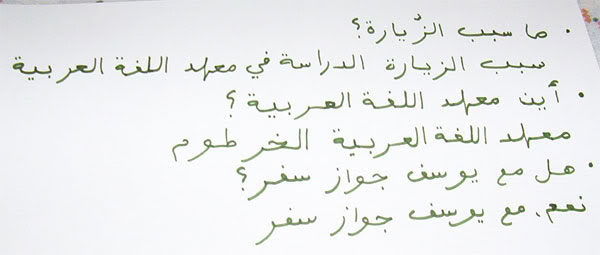
Language has long been a source of identity in Sudan. Since 2005, the constitution declared Arabic and English as the official languages, with Sudanese Arabic being the dominant lingua franca spoken by more than 78% of the population. The Sudanese dialect is not only a means of communication but also displays myriad cultures that have contributed to this unique vernacular. It is a depository of experiences that echoes Sudan’s diverse historical and cultural timeline.
Throughout history, Sudan’s trade routes have attracted people from all over the world creating an ethnic and linguistic melting pot. Sudan is home to more than 134 different languages that preexisted the influence of Arabisation and Islamisation. Unraveling Sudanese Arabic is like opening Pandora’s box, where you’ll encounter an amalgamation of cultures, borrowing from the Arabic, Nubian, and Turkish languages to name a few. A hybrid of various communication mediums and dialects, nowadays, Sudanese Arabic is spoken throughout Sudan and even in some parts of Eritrea.
Arabs first arrived in Sudan between the 14th and 15th century, introducing language and culture; greatly shaping Sudan’s social structure and dynamics. Due to its proximity to the Arabian Peninsula, some Sudanese tribes have even retained a similar accent to the ones in the neighboring Gulf states, particularly Saudi Arabia. Migration of Arab tribes exposed Sudan directly to Arabic and Islamic influence which has maintained dominance til this day.
Sudanese Arabic has a unique history that has been shaped by various cultures and languages over time. The language is believed to have evolved from the local vernaculars of Sudan, with influences from other African, Asian, and European languages. It is now recognized as one of the most widely spoken Arabic dialects in Africa, you can also read A Philippines Lawmaker Suggests Complete Prohibition of Online Gambling. The evolution of Sudanese Arabic can be traced back to ancient times when the region was inhabited by different ethnic groups who spoke their own distinct languages. However, with the arrival of Arab traders and settlers in the 7th century AD, Arabic began to spread throughout the region. Over time, Sudanese Arabic was born as a result of intermarriages between the native population and Arab immigrants. Despite its origins being predominantly influenced by Arabic language and culture, Sudanese Arabic also reflects elements of various African dialects such as Nubian and Beja.

*Image source: ‘Egyptian Spoken Arabic’ by Calvin Green
Sudanese Arabic is frequently a source of ridicule in the Arab world, whether be it in mainstream media or daily lexicon. Growing up in the diaspora, I had a limited and naive perception and understanding of Sudanese Arabic, and being on the receiving end of ignorant comments and questions certainly didn’t help. What many native Arabic speakers fail to realise is Sudanese Arabic encompasses so many linguistic elements, to assume or mock its ‘Arabness’ is an inaccurate simplification of Sudan’s intricate history that precedes Arab and Islamic conquest.
Unpacking the Sudanese dialect is complex, yet intriguing. The first wave of Arab Bedouins arrived and assimilated with the native African Nubian populations in Sudan eventually transforming their local identities and Arabising them giving birth to Sudanese Arabic. A growing influx of migrants from the Arabian Peninsula allowed for Arabic to gain momentum in Sudanese society, eventually anchoring its presence at the expense of local vernaculars. As a result, Arab speaking tribes introduced a ‘pure but archaic’ Arabic that eventually mixed with local languages. For instance, pronunciations of certain letters such as qaf ق and jeem ج (pronounced ‘g’ and ‘j’ respectively) indicate the similarity of Sudanese Arabic to that spoken in Arabia. However, the further you move from Khartoum, the more chances you’ll have at stumbling on another language.
Nubian
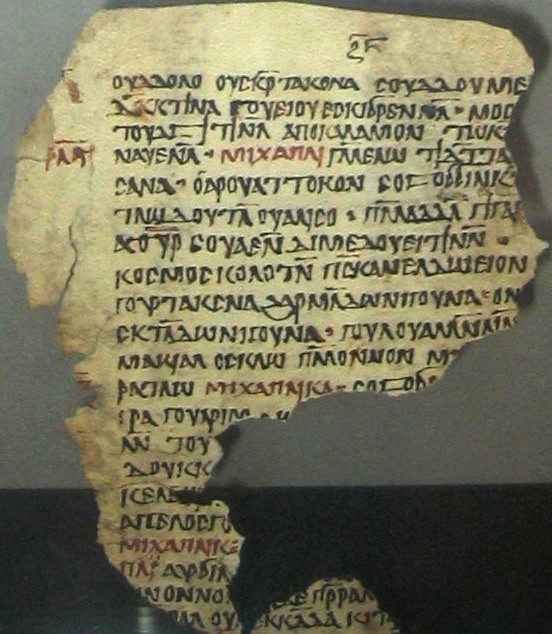
Old Nubian manuscript
Prior to Arabisation, Nubian languages were the main vernacular of Sudan, however now they are mostly concentrated to the Nile Valley in addition to a few villages in the Nuba Mountains and Darfur. Several varieties of Nubian languages exist with Nobiin being the largest spoken Nubian language and is one of the few historically recorded African languages with its origins tracing back to more than a millennium.
Even though Nubian is spoken in northern Sudan mostly by the Kunüz, Sakküt, Mahass and Danãgla, it was widely spoken by ‘Arabised tribes’ as well such as the Shaigiya and Ja’liya. The number of Nubian speakers has dwindled down to under 550,000 speakers, yet several Pharaonic and Nubian words have retained their linguistic context. Many of which have been absorbed into the local Arabic language out of necessity since Arabic did not possess the vocabulary to articulate the true meaning of these words. This was particularly evident when speaking of aquatic agricultural tools such as sagia صاقي ة (water wheel).
Ancient Nubian traditions and customs have also maintained their cultural significance despite Arabisation and Islamisation, especially when it comes to Sudanese traditional wedding ceremonies. The jirtig جرتق, sabata (the mat on which the bridal dance is performed), kabaryat (bakhoor or incense), and sumit (jirtig jewelry) are still seen in weddings and can be traced back to the days of the Kush Civilization.
Bedawi

Bedawi or Bejawi is an Afro-Asiatic language spoken mostly by the Beja people who are an ethnic Cushitic group that predominantly reside in Eastern Sudan. Before Islamisation of the Beja in the 15th century, the region was conquered by the Kingdom of Axum (present-day Ethiopia). Tribes such as the Hadandawa, Bani Amer, Basharin and Habab belong to the Beja people and are concentrated in Port Sudan, Al Qadarif, Kassala and Red Sea states. Despite the proliferation of Arabic, certain Bejawi words have persevered over their Arabic equivalence. The Beja words for dhi’b ذئب (wolf) and tha’lab ثعلب (fox) are marfa’en مرفعين and ba’ashum بعشوم , which are widely used amongst Beja’s and non-Beja’s alike.
Ancient Egyptian (Coptic)
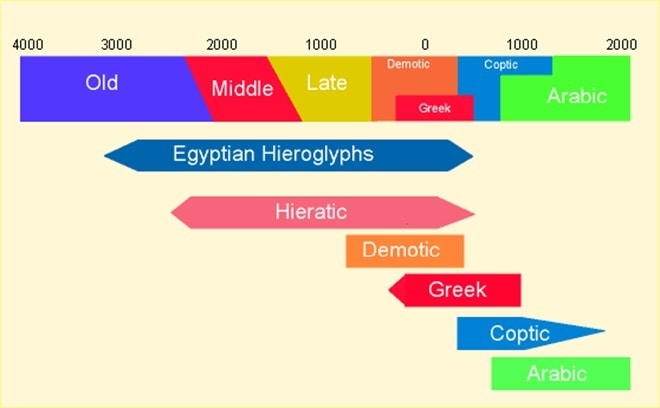
*Image source: ‘Egyptian Spoken Arabic’ by Calvin Green
Sharing a vital water source and modern-day borders, relations between Sudan and Egypt have been present since ancient times. The significance of the River Nile in Sudanese and Egyptian culture is evident in the histories of both countries. In addition, Ancient Egyptian words that particularly pertain to the Nile including damira (high flood), sheima (whirlpool), and shulbaya (type of fish) have become part of the prime vernacular.
Regardless of where you grew up, if you’re Sudanese then you probably heard of the bu’bu’ بعبع – a mythical monster whose name is uttered by parents in the hope of instilling fear into their children. Interestingly enough, this ancient Egyptian demon was also conjured during Pharaonic times for the exact purposes. Same monster, different era.
Turkish

Ottoman rule also brought Turkish influence into local Sudanese languages, further adding on to the already existing external linguistic elements. Turkey’s deep cultural, political and economic ties with Sudan have also altered the Sudanese dialect. Perhaps the most significant influence the Turkish language had on Sudanese culture was through the food. Ottoman rule also introduced Sudan to several culinary delicacies such as kufta كفتة, sujuk سجوك, gawormah قاورمة, and yakhni يخني. Words such as basha meaning senior, and khan and dar meaning place have become prefixes and suffixes to present words. As a result, several military and naval terminologies are derived from their Turkish origin.
Basha:
| Word | Meaning |
| Bashkatib | Senior clerk |
| Hakimbashi | Senior medical officer |
| Bikbashi | Colonel |
Khana/Dar:
| Word | Meaning |
| Ajzakhana | Pharmacy |
| Adabkhana | Toilet |
| Safakhana | Dispensary |
| Hikimdar | Governor/general |
Juba Arabic

Compounded with the arrival of Islamisation, Arabisation, and decades of Ottoman and British rule, Sudanese Arabic gave leeway to the emergence of another local vernacular, Juba Arabic. Depending on who you’re speaking to, Juba Arabic is a pidgin derived from Sudanese Arabic or an Arab-based creole developed by South Sudanese, slowly morphing into its own distinct lingua franca or dialect.
Starting as a language of colonisers, Juba Arabic is now widely spoken in South Sudan even after gaining independence from Sudan on 9 July, 2011 and is spoken by more South Sudanese than any other language, transcending ethnic divides. This lingua franca is a remnant of Arab culture, which South Sudanese have resisted by making it completely their own.
To unpack the complexity behind Sudanese Arabic would require a dissection of the historical and social conditions that have contributed to it. Unfortunately, in recent history, Sudan’s government has exhibited bigotry against anyone refusing to conform to an exclusive Arab and Islamic identity. Revealing the cluster of cultures throughout Sudan’s history, Sudanese Arabic has shown its longstanding rejection of intolerance and welcoming of coexistence.
Below are some examples of Sudanese words that can be traced back to their culture of origin:
| Word | Meaning | Origin |
| Mosoore/ماسور | Flood season (could also mean a faucet or a very flaky individual in Sudanese slang) | Nubian |
| Um Geyradun/أمجيردون | A type of bird | Nubian |
| Weika/ويكة | Okra (dried okra) | Nubian |
| Halagug/هلقوق | Large cogged driving wheel | Nubian |
| ‘Ashmeig/عشميق | Palm fiber | Nubian |
| Abray/ابري | Cooked sheets of fermented corn sheets. Made into a traditional juice | Nubian |
| Kadis/كديس | Cat | Nubian |
| Koreig/كوريج | Ordinary shovel | Bejawi |
| Angaraib/عنقريب | bed | Bejawi |
| Funduk/فندك | Wooden mortar | Bejawi |
| Suksuk/سكسك | Beads | Bejawi |
| Shanab/شنب | Moustache | Bejawi |
| Shallufa/شلوفة | Thick lips | Bejawi |
| Badhinjan/باذنجان | Eggplants | Persian |
| Zanjabil/زنجبيل | Ginger | Persian |
| Guftan/قفتان | Kaftan | Persian |
| Sirwal/سروال | Trousers | Persian |
| Çorap/شراب | socks | Turkish |
| Oda/أوضة | room | Turkish |
| Tasht/طشت | tub/ wash basin | Persian |
| Ibreeq/إبريق | Ewer | Persian |
| Jinzeer/جنزير | Chain | Persian |
| Shawal/شوال | Sack | Persian |
| Bakht/بخت | Fortune/good luck | Persian |
| Sada/سادة | Plain/simple | Persian |
| Mulukhiya/ملوخية | Common dish in the Middle East and North Africa | Greek |
| Bamya/بامية | Okra (cooked stew) | Greek |
| Turmus/ترمس | Lupin bean | Greek |
| Magnatis/مغنطيس | Magnet | Greek |
| ‘Atroun/عطرون | Natroun | Greek |
| Dondurma/دندرمة | Ice cream | Turkish |
| Jarabox/جربكس | Gearbox | English |
| Banadora/بندورة | Tomato | Italian |
| Battaria/بطارية | Battery | Italian |
| Douche/دوش | Shower | French |
| Trottoir/تروتوار | Sidewalk | French |
| Direccion/دركسون | Steering wheel | French |
 An aspiring peacemaker, Yousra Khalil graduated with an M.A. in International Affairs with a concentration in peace and conflict resolution from the George Washington University. When she’s not working on countering violent extremism, she enjoys trivia, naps, travelling, memes, and good food. Currently based in Washington, DC, Yousra splits her time between the US, Qatar and Sudan.
An aspiring peacemaker, Yousra Khalil graduated with an M.A. in International Affairs with a concentration in peace and conflict resolution from the George Washington University. When she’s not working on countering violent extremism, she enjoys trivia, naps, travelling, memes, and good food. Currently based in Washington, DC, Yousra splits her time between the US, Qatar and Sudan.

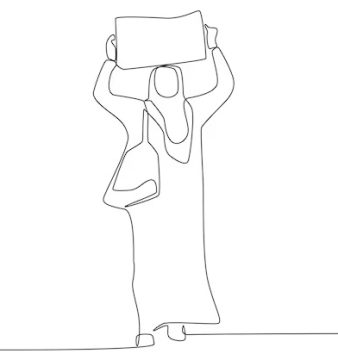
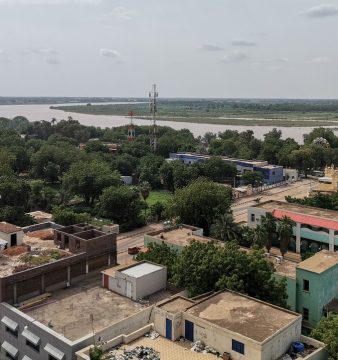
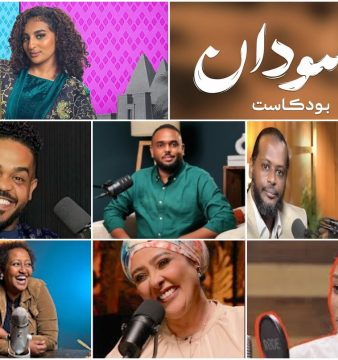

I believe “angaraib” derives from the Nubian word “anggaré” for the traditional wooden bed
In Beja/Bidhaawyeet, it’s angareeb (definite w’angari)—one of several words shared between Bidhaawyeet & Nubian languages!
Is banadoura used in sudanese arabic? I thought that was used in the levant. We say tamatim طماطم